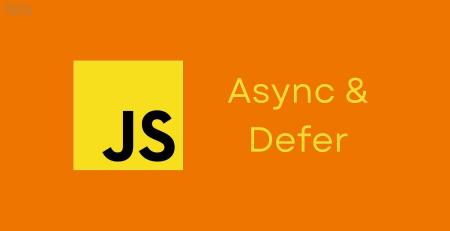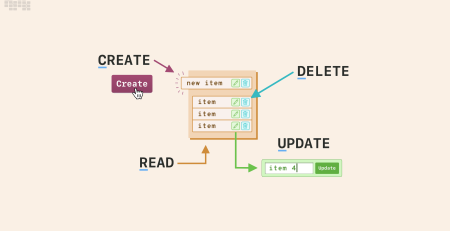Building web applications with SEO in mind with ReactJs
Everyone is aware that SEO is the most important instrument in digital marketing. Without implementing good SEO strategies, no business can expand. To fully grasp SEO, one must be familiar with all of its components and how they interact with one another.
More customers, possibilities, and revenue are all benefits of mastering SEO for your company. Additionally, SEO may help you develop relationships, increase brand recognition, and position yourself as a credible authority in your industry.
Importance of SEO
SEO is crucial since it maintains the objectivity of search results on Google, Bing, and Yahoo. It lessens or completely eliminates the chance of tampering with search results. It would be quite simple to alter the search results in the absence of SEO.
Simply put, SEO is Google’s method of determining the rank of websites for the search engine query entered. Websites must appeal to their visitors in addition to completing all other SEO requirements in order to rank higher.
Because of SEO, even users trust search engines. They assume a website is a reliable source for their input query whenever it appears at the top of the search results. The rating is very important since it will bring more visitors and clicks to your website.
The fact that SEO is economical is another feature that distinguishes it. Many businesses spend a lot of money on paid advertisements to increase their reach, but not all businesses can afford to do so because they have very tight deadlines. These businesses benefit greatly from SEO. Because it provides them with a practical means of attracting qualified visitors without having to pay for it.
After learning about the importance of SEO, let’s examine how it functions. To calculate the position of any website in the search results, the search engine makes use of web crawlers.
A web crawler is just a bot that visits websites on a regular basis and analyses them in accordance with the strict standards set by the relevant search engine. There is a crawler for each search engine. The name of Google’s crawler, for instance, is Googlebot.
The Googlebot scans pages link by link to acquire important data on a variety of factors, including the amount of backlinks, the freshness of the website, and the uniqueness of the content. Additionally, it downloads CSS and HTML files before sending them to the Google servers.
SEO in single-page applications How crawlers work
Single-page applications (SPAs) powered by React are gaining popularity among well-known digital companies like Google, Facebook, Twitter, and many more. It’s mainly because React makes it possible to create online applications that are quick, responsive, and animation-rich and can provide users with a rich and seamless experience.
It is only one side of the coin, though. The SEO possibilities of web applications created using React are somewhat constrained. Web apps that primarily rely on SEO marketing for traffic and visits are negatively impacted by this.
The good news is that there are a few ready-made response solutions that can assist you in overcoming the SEO difficulties brought on by the SPA. But first, let’s define SPAs and look at some helpful approaches to comprehending SEO challenges in React.
What is SPA and why you must use React?
Single page applications are web applications that run entirely within the browser and don’t require page reloading while in use. This is due to the fact that all of its material is provided on a single HTML page, which is dynamically updated but does not refresh after each user interaction.
Single-page applications include programs like Google Maps, Facebook, Gmail, Google Drive, Twitter, and GitHub. The user experience is a well-configured SPA’s main benefit (UX). It’s because the user can interact naturally with an application without having to wait for a page to reload or anything else.
Developers can utilize any of the well-known JavaScript frameworks, including Angular, React, and Vue, to create an SPA. React is the most well-liked of these three frameworks among developers. React was named as the most popular JavaScript framework in the 2019 State of JavaScript Survey, which further demonstrated this.
Because of its component-based architecture, which makes it simple to reuse code and partition the large application into smaller parts, React is the developer’s first choice when it comes to creating SPAs.
Massive SPA projects may also be maintained and bugged much more easily than large multi-page apps. Additionally, virtual DOM guarantees a high level of app performance. Additionally, the React library supports all current browsers, including those from earlier versions.
Challenges associated with SPA optimization for search engines
Single-page application optimization is a difficult task because it entails several difficulties. As was already said before, an SPA loads the page on the client side initially, serving as the empty container. The content that JavaScript has integrated is subsequently used to fill this empty container.
Additionally, a browser is needed in order to run the script inside the SPA. It won’t be able to load web pages dynamically until this is complete.
The search engine bots will no longer be able to crawl any SPA websites when they visit them. Only after all of the content has already been updated in the users’ browsers can they crawl it.
Bots will view your website as empty and shoddily built if they can’t find any pertinent information. The search engine won’t index your website or web application if this occurs.
However, these are not the only factors that make React development challenging in terms of SEO. Let’s examine a few other factors one at a time.
Delays in content fetching
Although not daily, web crawlers do frequently visit the page. Because of this, if the content on the website is being updated with each query, search engines won’t index the page.
The data is collected from the API once the CSS, HTML, and JavaScript files have been downloaded successfully. It is only then sent to the server.
Limited crawling period
The time span during which search engine bots can crawl different website pages is finite. It analyses as many pages as it can in the little time available.
When the allotted period has passed, it will, however, just depart your website. This also means that if it takes a long time for your website to load, interpret, and execute the code, the search engine will just give up because its crawling time has run out.
JavaScript code errors
A website must be developed with many lines of code, and even a single mistake in the JavaScript code might make it difficult for the search engines to index the page.
The JavaScript parser won’t be able to process the problem in such circumstances, which will finally cause it to display the Syntax Error immediately. You should review the JavaScript code twice before submitting it to Google for this reason.
One URL for all pages
One of SPAs’ main problems is this. If a website merely has one page, it doesn’t cause too much of an issue. For a website with multiple pages, it becomes nearly impossible for the search engines to index the page if that one URL is not updated.
Meta tags
You would need distinct page titles and descriptions for each page in order to aid Google in recognizing your web page content. Google will use the same description for all of the pages if you don’t do this.
The issue arises when using React Native in a single page application because you won’t be able to modify these tags in React.
How to overcome the above challenges with React JS
As you can see from the list above, optimizing SPAs for search engines presents a number of difficulties. However, there are a few ways to get around these problems and create React apps that are SEO-friendly. These include:
Prerendering
One of the common methods for creating single-page and multi-page web apps SEO-friendly is prerendering. Using prerendering services like prerender.io is one of the most popular ways to achieve it.
It is typically utilized when search engine bots are unable to correctly render the pages. Pre-renderers, which are specialized programs that intercept requests to websites, can be used in such circumstances. As the graphic illustrates, there are so two cases here.
The pre-renderers first send a cached static HTML version of the website if the request is from a bot. Second, the typical page loads if it comes from the user.
The server payload for pre-rendering is less than that of server-side rendering. It is also true that the majority of prerendering services are paid for and that they struggle to handle dynamically changing information. Let’s examine the advantages and disadvantages of prerendering in more depth.
Pros
- Supports all the latest web novelties
- Simpler and easier to implement
- Requires minimal to no codebase modifications
- Executes every type of modern JavaScript by transforming it into static HTML
Cons
- Not suitable for pages that show frequently changing data
- These services are paid
- Pre-rendering can be quite a time consuming if the website is huge and consists of many pages
- You have to rebuild the pre-rendered page for each time you modify its content
Server-side rendering
You must understand the distinction between server-side and client-side rendering if you’re planning to construct a React online application.
Client-side rendering means that HTML files or files with less content are delivered to the Google bot and browser. The content is then downloaded from the server using JavaScript code, allowing viewers to view it on their devices.
Client-rendering poses few issues when seen from the SEO angle. It’s because the Google bots receive little to no content, which prevents them from effectively indexing it.
The Google bots and browsers can download HTML files together with all the content when server-side rendering is used, though. This facilitates a thorough page indexing by Google bots.
One of the simplest ways to develop SEO-friendly React web applications is through server-side rendering. However, you will need to include Next.js if you want to create a single-page application that can render on the server.
Isomorphic React apps
An isomorphic React application is one that can be used on both the client and the server. You can execute the React app and capture the rendered HTML, which is typically rendered by the browser, with the help of isomorphic JavaScript. Anyone who requests the site will then receive the produced HTML file.
The program uses the HTML file as a foundation on the client side and then continues to function in the browser as though it had just been rendered there.
If the client is capable of running the scripts or not is decided by an isomorphic app. When JavaScript is disabled, the server renders the code. Bots and browsers may now access all the necessary meta information and CSS and HTML tags.
The first page is rendered on the server as soon as JavaScript is enabled, allowing the browser to download CSS, HTML, and JavaScript files. Following that, JavaScript starts to run, which dynamically loads the remaining material.
This explains why the first screen loads quicker. Additionally, it improves the app’s compatibility with earlier browsers. In comparison to webpages that are rendered on the client side, even user interactions are more fluid.
Real-time isomorphic app development might be difficult because it takes so long. However, there aren’t many frameworks that can streamline and accelerate the creation of real-time isomorphic apps. Gatsby and Next.js are the two frameworks that are most often used.
A free open-source compiler called Gatsby lets programmers to create web apps that are scalable, quick, and powerful. It’s crucial to note that Gatsby does not provide server-side rendering; instead, it creates static websites and then stores the created HTML files on a hosting provider or in the cloud.
Gatsby was that; now let’s take a closer look at Next.js.
Next.js framework for SEO optimization
When it comes to addressing the SEO difficulties of SPA and React-based web applications, Next.js is a potent tool. So, precisely what is Next.js?
What is Next.js?
A React framework called Next.js is used to quickly construct React apps. Additionally, it permits automatic code splitting and hot code reloading. Additionally, Next.js is capable of full server-side rendering, which results in the creation of HTML for each request.
There are numerous advantages to using Next.js for both clients and the development team.
How to optimize Next.js app for SEO?
Let’s examine the numerous procedures involved in Next.js app SEO optimization.
Make your website crawlable
There are two ways to provide crawlable material to search engines using Next.js. These choices include prerendering or server-side rendering.
We’ll show you how to prerender your website in the guide that follows. You must alter next.config.js as shown below and issue the npm run export command in order to prerender the application.
const withSass = require('@zeit/next-sass')
module.exports = withSass({
exportPathMap: function () {
return {
'/': { page: '/' },
}
}
});By doing this, a new directory called out will be created, including all of the static pages.
Create a sitemap
When it comes to SEO, having a sitemap is usually better because it enables search engines to properly index the website. However, establishing a sitemap is a time-consuming task. We will utilize the nextjs-sitemap-generate package to automate all the operations as a result.
Given that you only have one page, this may seem like an extreme measure. However, if you decide to create or extend your SPA, you will be completely protected.
npm i nextjs-sitemap-generator
The only thing left to do is to add the following code to the configuration file after the package has been installed.
const sitemap = require('nextjs-sitemap-generator');
sitemap({
baseUrl: '<your_website_base_url>',
pagesDirectory: __dirname + "/pages",
targetDirectory : 'static/'
});The sitemap.xml file created as a result is located in the out directory. You should be aware nevertheless that Google Search Console will require you to manually submit your sitemap. Google won’t recognize it before that.
Addition of metadata
The addition of metadata to the website is regarded as best practice because it helps the crawlers comprehend the content of your page. Next. The majority of the metadata, including the content type and viewpoint, are added automatically by JavaScript.
Simply modifying the Head component in the following index.js file will allow you to define the meta description element.
<Head>
<meta name="description" content="Nile Bits provides the best digital services that deliver scalable, robust, and cost effective digital solutions."/>
<title>Outsourcing Software Development | Dedicated Teams | Nile Bits | Home>
<link rel="stylesheet" href="//themes/v4.3.2/default/style.css" />
</Head>If you follow every SEO step outlined above, Google Lighthouse will describe your SPA in a manner similar to this:
How to make your web application fast with Redux?
A web application or website cannot be deemed SEO-friendly until and unless it is quick. Any website or online application must operate quickly in order to be deemed SEO-friendly.
The subject of how to make your web application faster now emerges. Redux can help in this situation. Let’s examine Redux’s exact nature and the advantages it offers.
What is Redux?
Redux is a framework and design pattern that uses events, also referred to as actions, to maintain and change the application state.
Additionally, it acts as a primary repository for a state that must be used throughout your entire program. Additionally, there are restrictions that make sure the state is only altered in a predictable way.
Why use Redux?
There are numerous justifications for using Redux. One of the reasons is that it makes it simpler to comprehend how, when, where, and why the application’s state is being updated.
Additionally, it gives you a sense of how the application logic will operate after such adjustments. Let’s examine the following reasons one by one:
Predictable state
When it comes to the Redux, the state is always predictable. Since reducers are pure functions, they provide the same result if the same action and state are passed through them.
In addition, the state is immutable, which means it is constant. It is feasible to implement tiresome chores like limitless undo and redo because of this.
Maintainability
When it comes to the arrangement and structure of the code, Redux is pretty challenging. This makes it simple for someone with Redux understanding to comprehend the architecture of a Redux application. It improves a code’s capacity to be maintained as a result.
Debuggable for longer period
Redux makes it simple to debug an application. Understanding network failures, coding issues, and other types of bugs that may appear during production is made simple by logging state and activities.
State persistence
Many of the app’s state variables can also be saved to local storage and then restored after the refresh is complete.
When to use Redux?
Communication between two components that do not have a parent-child connection is discouraged in several frameworks, including React. Similar to React, you may build this by developing a global event system that adheres to the Flux paradigm. Redux can help in this situation.
Redux provides you with a store where you can conveniently store all of the application state. The other components B and C, which must be informed of this change of status in Component A, are informed of any changes in Component A.
In comparison to our initial assumptions, this situation is substantially superior. It’s because if we had allowed our components to communicate with one another, an error or an unreadable codebase might have resulted. You may avert this scenario by using Redux.
Component A transmits state changes to the store, and Component B or C can simply obtain them from the store if they are needed. This makes the logic of the data flow seamless.
Summary
When compared to native programs, single-page applications, or more generally known as web applications, are noted for their superior frictionless interfaces and remarkable performances. They also provide simple web development and a smaller server burden.
It would be a genuine shame if you were to overlook these advantages due to SEO-related difficulties. However, this is no longer the case because the solutions provided in the blog above allow you to solve all SEO-related problems.
I hope this article gave you some insightful tips on how to create web applications that are quick and SEO-friendly. Hiring devoted engineers from Nile Bits who have exceptional skill sets and experience is a simpler method to construct your web application.
By utilizing the aforementioned techniques, these committed developers are skilled at creating web apps that are quick and SEO-friendly. What are you still holding out for? To get started, hire specialized developers from Nile Bits right away.











Leave a Reply